 W
WThe Artus Court, formerly also Junkerhof, is a building in the centre of Gdańsk, Poland, at Długi Targ 44, which used to be the meeting place of merchants and a centre of social life. Today it is a point of interest of numerous visitors and a branch of the Gdańsk History Museum.
 W
WThe Będzin Castle is a castle in Będzin in southern Poland. The stone castle dates to the 14th century, and is predated by a wooden fortification that was erected in the 11th century. It was an important fortification in the Kingdom of Poland and later, the Polish–Lithuanian Commonwealth.
 W
WThe Princes Czartoryski Museum – often abbreviated to Czartoryski Museum – is a historic museum in Kraków, Poland, and one of the country's oldest museums. The initial collection was formed in 1796 in Puławy by Princess Izabela Czartoryska. The Museum officially opened in 1878.
 W
WThe Eagle Pharmacy Museum is located on the southwest edge of the Bohaterów Getta Square, under number 18 in Kraków, Poland.
 W
WThe Ethnographic Museum in Włocławek - a branch of the Kujawy and Dobrzyń Land Museum in Włocławek.
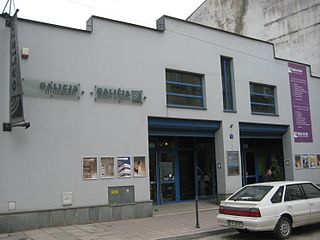 W
WThe Galicia Jewish Museum is located in the historic Jewish district of Kazimierz in Kraków, Poland. It is a photo exhibition documenting the remnants of Jewish culture and life in Polish Galicia, which used to be very vibrant in this area.
 W
WThe so-called Piasts' Castle in Gliwice, southern Poland, dates back to the mid-14th century. It consists of a tower from 1322, which was originally part of the city walls, and an adjoining building which was probably an armory. Modifications were carried out in the 15th century, between 1558-61 it became the residence of Friedrich von Zettritz. Later it was an armory, a jail, a magazine and since 1945 a museum. Between 1956-59 it was thoroughly rebuilt and partially reconstructed. Since that time it is claimed to be a Piast castle, although no sourced evidence backs this claim. Since 1959 the castle has been part of the Gliwice Museum.
 W
WThe Historical Museum of the City of Kraków in Kraków, Lesser Poland, was granted the status of an independent institution in 1945. Originally, it was a branch of the Old Records Office of Kraków, in operation from 1899.
 W
WPOLIN Museum of the History of Polish Jews is a museum on the site of the former Warsaw Ghetto. The Hebrew word Polin in the museum's English name means either "Poland" or "rest here" and relates to a legend about the arrival of the first Jews to Poland.
 W
WThe Museum of Independence is a museum in Warsaw, Poland. It was established on 30 January 1990 as the Museum of the History of Polish Independence and Social Movements and is located in the former Przebendowski Palace at al. 'Solidarity' 62, but it also has these branches:X Pavilion Museum at the Warsaw Citadel Museum of Pawiak Prison Mausoleum of Struggle and Martyrdom
 W
WThe Irena and Mieczysław Mazaraki Museum is a regional museum in Chrzanów in Lesser Poland Voivodeship. It was once the home of Henry Lowenfeld, a 19th-century entrepreneur and migrant into Great Britain.
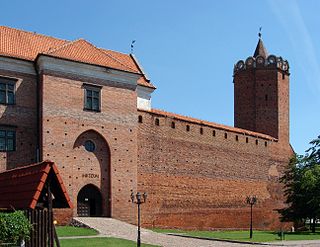 W
WThe Łęczyca Royal Castle is a medieval castle situated in Łęczyca, Poland. The castle was erected by Casimir III the Great as a fortification during 1357–1370.
 W
WMuseum of Warsaw is a museum in the Old Town Market Place in Warsaw, Poland. It was established in 1936.
 W
WMuzeum Ziemi Szprotawskiej, established 2000 by Towarzystwo Bory Dolnośląskie. It is the local center for historical and archeological research pertaining to the old Szprotawa District, for the towns of Szprotawa, Małomice, Przemków and Niegosławice.
 W
WThe National Museum of Agriculture in Szreniawa is a museum whose main site is in the village of Szreniawa, south of Poznań in western Poland. It was founded in 1964, and gained the status of National Museum in 1975. It has many open-air exhibits, including examples of agricultural tools and machinery, beehives, and other historical objects.
 W
WThe Oświęcim Synagogue, also called the Auschwitz Synagogue, is the only active synagogue in the town of Oświęcim, Poland. The formal, as well as pre-war, name of the synagogue is Khevre Loymdei Mishnayos. It is now part of the Auschwitz Jewish Center, which includes a Jewish Museum, a cafe in the house of Syzmon Kleuger and an education center.
 W
WMuzeum Więzienia "Pawiak" is a museum in Warsaw, Poland, established in 1965. It shows the history of Pawiak Prison which was notably used during the German occupation between 1939 and 1944.
 W
WMuzeum Historii Polskiego Ruchu Ludowego is a museum in Warsaw, Poland. It was established in 1984. The museum is located in a building known as the ‘Yellow Tavern’. Its focus is the history of the Polish countryside, peasant political parties and other groups. It does not have a permanent collection but offers a range of changing exhibitions.
 W
WPomorska is a building also known as Silesian House in Krakow, Poland. The word Pomorska was for the Krakow 1940s generation a synonym for Gestapo headquarters and operations.
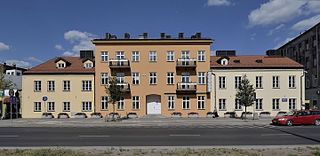 W
WMuzeum Warszawskiej Pragi is a museum in Warsaw, Poland. It was established in 2006. It is located in historic buildings at Targowa 50/52, one of which, Krzyżanowski's House is the oldest brick built house in the Praga suburb, dating back to the 18th century.
 W
WThe PRL Museum is a museum in Kraków, Poland devoted to documenting the forty-year history of the communist People's Republic of Poland (PRL). It occupies the building of the old Kino Światowid, a formerly state-owned cinema in the Nowa Huta district of Kraków.
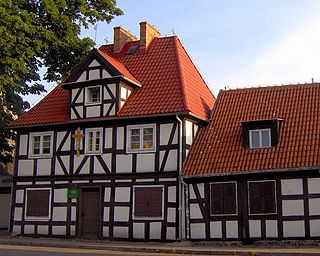 W
W54°43′15.73″N 18°24′39.71″E
 W
WThe Sandomierz Royal Castle is a medieval structure in Sandomierz, Poland. It was built on a slope of Vistula River by Casimir III the Great and extended in the 16th century. The original building was blown up in 1656, leaving only the west wing standing. It was later transformed into a Renaissance styled residence with the west wing preserved as a museum.
 W
WSchön Palace is a palace located in Sosnowiec in southern Poland. The building is located near the Warsaw–Vienna railway and surrounded by a neo-Romantic park. Since 1985 it has housed the Museum in Sosnowiec. Wilhelm Palace is located nearby.
 W
WSilesian Museum in Katowice is a museum in the City of Katowice, Poland.
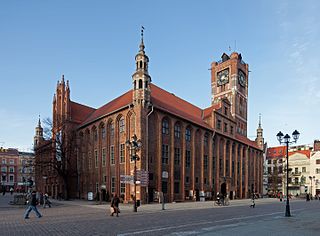 W
WToruń Regional Museum, located in the Ratusz hall of Toruń, is one of the oldest and largest museums in Poland. It started in 1594 as the mere Cabinet of Curiosities at the library of the academic Gimnazjum, called Musaeum in Latin. Re-established in sovereign Poland as a city museum in 1920 after the century of military partitions, it was administratively structured as the regional museum in 1965.
 W
WThe White Stork Synagogue is a nineteenth-century synagogue in Wrocław, Poland. Rededicated in 2010 after a decade-long renovation, it is the religious and cultural centre of the local Jewish community, under the auspices of the Union of Jewish Religious Communities in Poland. It is the only synagogue in Wrocław to have survived the Holocaust.
 W
WThe Royal Palace is a palace in Wrocław, Poland. Originally a palace of the Prussian monarchy, it now houses the city museum.
 W
WŻupy krakowskie was a Polish salt mining company which operated continuously from its inception in the 13th century to the late 20th century. It managed salt mines and salt works in two neighboring towns, Wieliczka Salt Mine in Wieliczka and Bochnia Salt Mine in Bochnia, as well as river salt ports on Vistula and, only in the 17th century, a salt work in Dobiegniewo. The company was created circa 1290 by the Polish Crown, thus giving birth to the largest industrial centre in Europe until the 18th century, according to UNESCO, both in terms of the number of employees and its production volumes.